分享到微信,
请点击右上角。
再选择[发送朋友]
或[分享到朋友圈]

2022-12-16 10:19

顾小平个展《均值(Moderacy)》于2022年12月10日在北京798艺术区白盒子艺术馆开幕。作为《行走的墨线(Ink Lines in Motion)》的延续之作,艺术家在《均值(Moderacy)》系列作品中,运用含蓄的色彩,赋予理性的“墨线”全新的视觉张力。在看似无声无息的线性实践中,艺术家抹去了纵横交错的“线”所涵盖的时间概念,创造出新的空间与秩序,建立其独特的艺术世界。
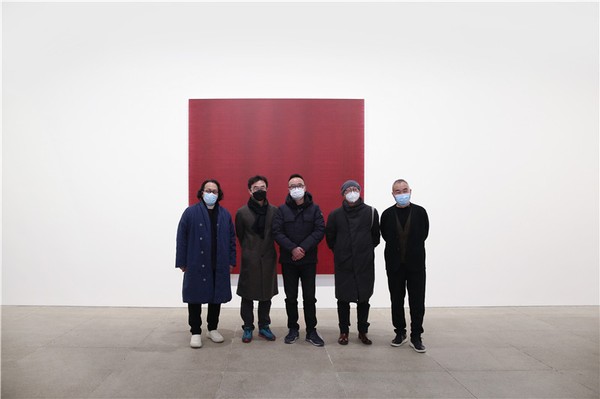
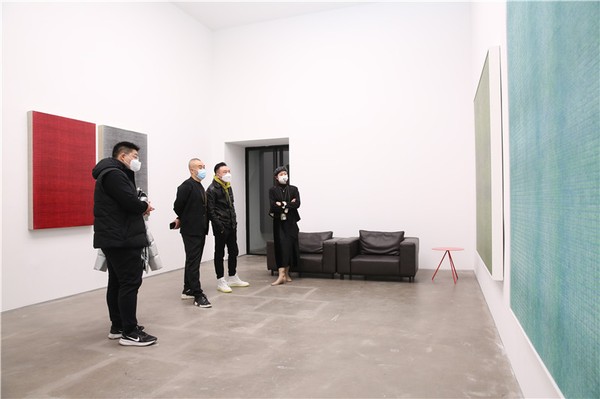

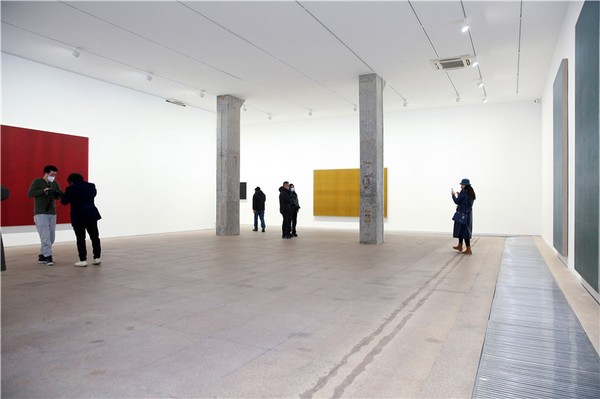
展览现场
《均值》Moderacy (节选)
——LEE Janguk李章旭
本次展览的作品是艺术家从2020年至2022年以来创作的《均值》系列。“均值”在英文通常被译为‘Average,Mean’。其中,‘Mean’在汉语环境下意味着“中庸”之意。中庸,即作为道德理论中不存在“过”与“不足”的行为准则,推动着艺术家找到自己的方向,明确自己的意图。
This exhibition is a series of works named ‘均值 (Junzhi)’ from 2020 to 2022. ‘均值’ has the meaning of ‘Average, Mean’ in English. Amongst them, ‘Mean’ means ‘moderation (中庸)’ in Chinese. Moderation is a rule of conduct with neither excess (過) nor scarcity (不足) in moral theory, and the artist's term ‘均值’ signifies that the action lies between the two extremes.


展厅现场
艺术家采用中国传统宣纸或将帆布固定在木框上,通过拉动在墨仓中浸满墨汁的绳,打在画布表面上留下“线痕”。在整体画面上留下来的每一根细线,两两之间,间隔精确一致。艺术家重复打线的过程,永不停歇,直到满意为止。“重叠的线”是只属于顾小平一人的抽象实验的结果。
The fruit of GU Xiaoping's abstract experiment the structural screen of the 'overlapping line', is the result of meticulously planned mental labor and the determination of hard physical labor. First, traditional Chinese paper, Xuanzhi (宣紙, Xuan paper) or canvas cloth is fixed, and a thread of ink or paint is drawn from the ink bottle to create a line on the screen.
由反复重叠的线构成的画面,其结构经历了艺术家缜密地规划。最终呈现在画面上的是艺术家精神功力的结果,与此同时在画面中所反映的是高度肉体劳动的结晶。宣纸与帆布表面不再呈现其原有的材料质地。原本材料的特征与反复纵横交错的线痕融为一体,将整个画面表现为多种不同的样貌形态。
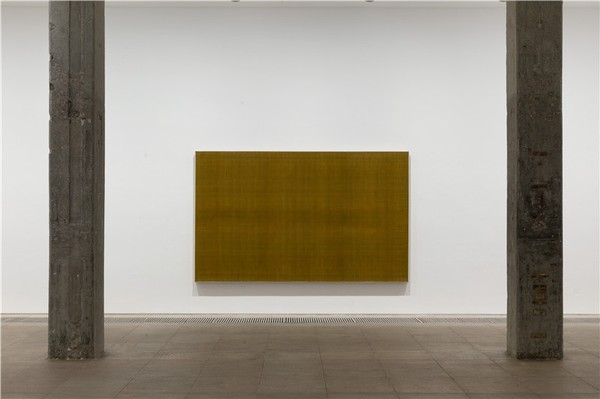
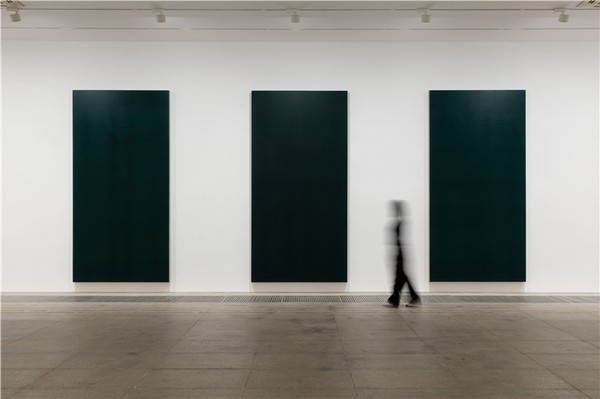
展厅现场
It is repeated from left to right at regular intervals as measured by a ruler, and from right to left without end. That work carries on until the artist is satisfied. Countless vertical horizontal lines drawn by the artist appear in different forms related to the uniquely textured screen.
他的作品强调了重复的重要性,利用媒介的质感,根据严格的规则重复相同的过程,从而形成了一个独特的空间,仿佛在画布和纸张的龟裂中穿透本质。艺术家通过龟裂特有的风格与深度的置换的同时,构建出作品中治愈空间,并期望像通过这样的方式创造龟裂,使一切都处于和谐的状态。
Using the physical properties of the medium, his work stresses the importance of repeating the same process under strict rules, and consequently, he formed a unique space which seemed to penetrate the essence along the cracks in the canvas and paper. The artist replaces this crack with his unique style and depth while achieving the space of healing within the artwork. By doing so, he tries to achieve harmony as if he were to form balance.
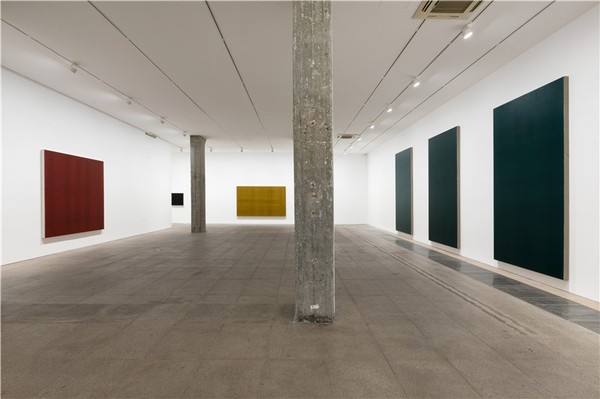
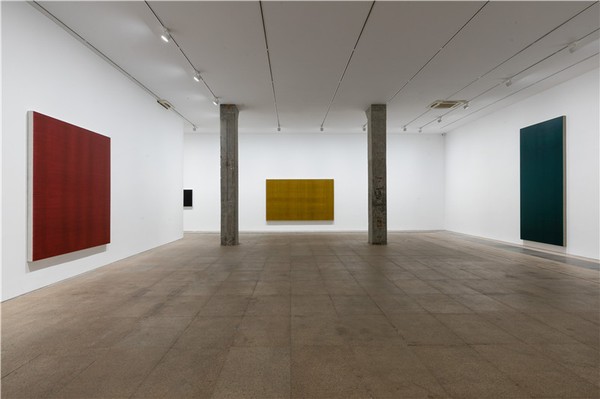
展厅现场
艺术家顾小平(GU Xiaoping)采取了西方非定形的艺术形式,并运用极具东方美学的技法,将以中国式的母国主义为基底,使用同时兼具历史性与现代性的工具,绘制出人们所熟悉的民俗性、文人化符号——“线”。由最初的宣纸扩张到帆布布面,可以说艺术家顾小平是始终如一地探究东方精神与传统的艺术家,同时也能够被评价为“定义中国式新造型主义抽象画”的艺术家。
If this is the case, Gu Xiaoping adopted the western enformel style as an oriental aesthetics or technique by drawing familiar literary paintings and folk symbols (sign) on Xuanzhi with these tools that have as historicity and modernity based on the Chinese motherlandism, which later extended to canvas cloth. In this regard, he can be evaluated as an artist who consistently explored the spirit and tradition of the East and as an artist who aimed for (established) Chinese Neoplasticism abstract art.
在“理想‘家’(House of Utopianism)” 展览中,本人所认为的20世纪最具意义的发明品之一的“抽象艺术”,即对艺术领域中的抽象艺术概念化后形成的词,将抽象艺术与乌托邦紧紧相接在一起。而由此延伸,本人将“现中国抽象艺术家”命名为“中国-前卫乌托邦主义者(Chinese-Avantgarde Utopians)”。作为本次举办个人展的艺术家的同时,又作为中国-前卫乌托邦主义者(Chinese-Avantgarde Utopians)群体之一,艺术家顾小平更多是以通过自身技法来达到“追求属于自我境界为目的”的艺术家。
In the “House of Utopianism (理想“家”)” exhibition, I named the contemporary Chinese abstract artists as "China Avantgarde Utopians", as abstract art and utopia are one of the best inventions of the 20th century and are inextricably connected together. GU Xiaoping, the artist of this individual exhibition, is also one of the artists named "China Avantgarde Utopians" who constructed his world with his own technique.

分享到微信,
请点击右上角。
再选择[发送朋友]
或[分享到朋友圈]

